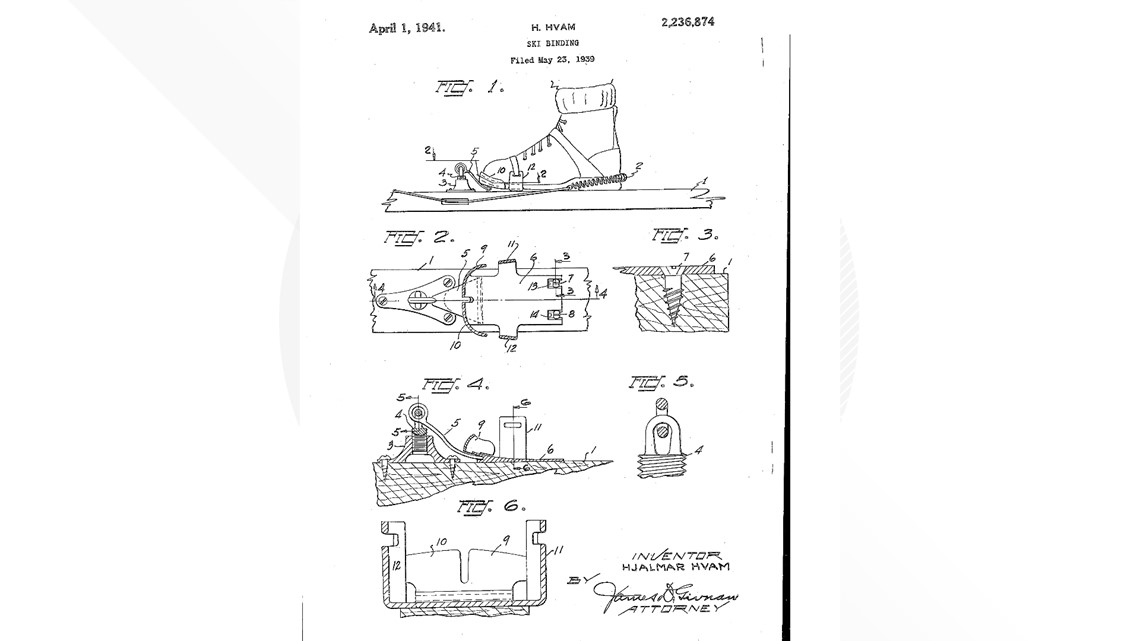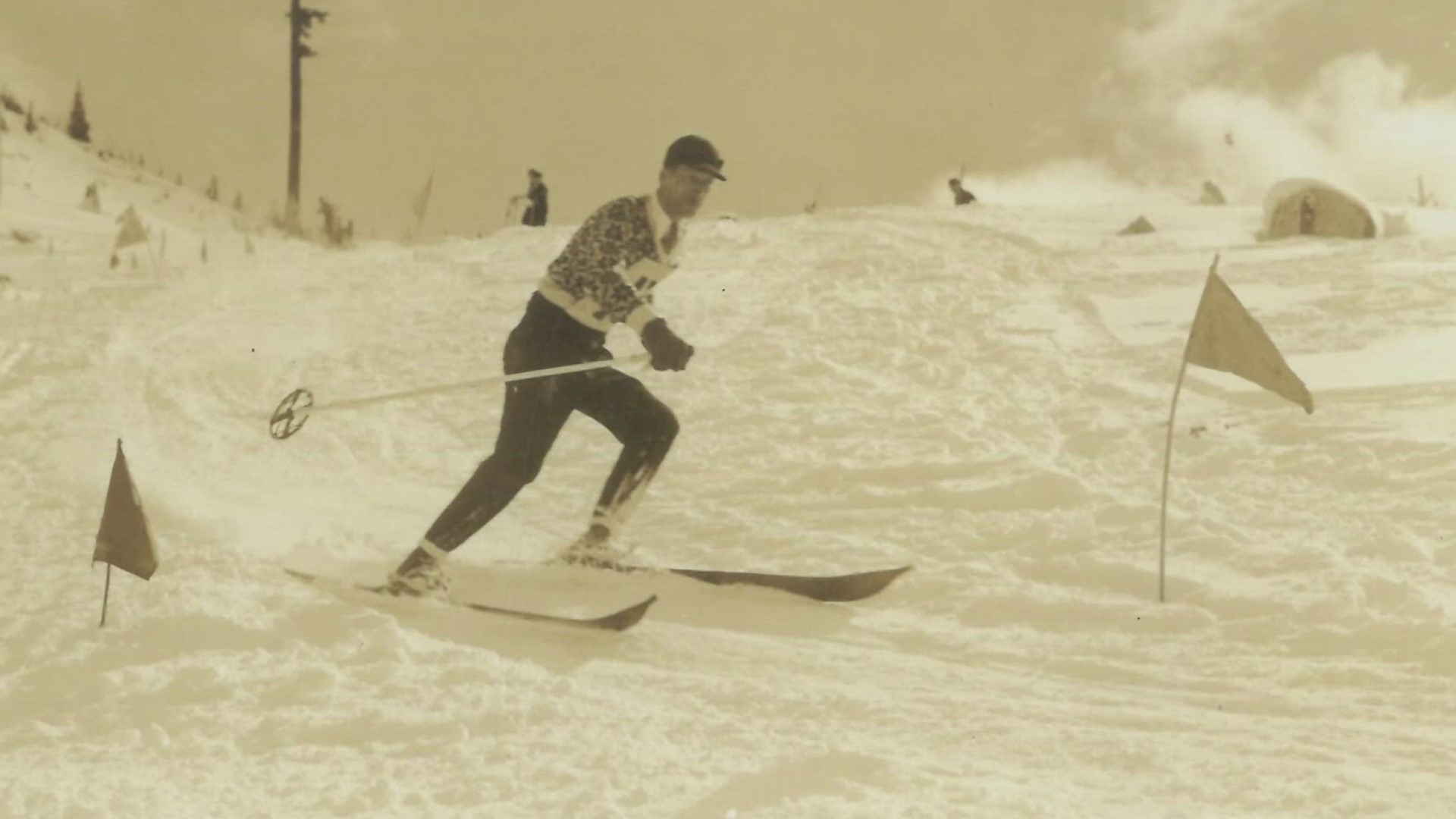PORTLAND, Ore. — In the early days of skiing, falling was painful. Many skiers twisted their ankles or broke their legs when the skis that were attached to their feet didn't break away, but instead stayed clamped to their feet.
"They were called bear traps," said Bill Lang, a retired professor of history at Portland State. "They were these metal brackets that you stuck your foot into with a cable behind. Those were unyielding."
One such fall on Mount Hood, by a man named Hjalmar Hvam, spurred a redesign of the ski binding. Hvam broke his leg in the fall, the second time he'd done so.
"I've just thought of something," Hvam told KGW in 1988, recalling his words to the person staying in the hospital room next to him about an idea he had.
Before we get to the invention itself, let's back up to the early 1900s.
"Hjalmar grew up in Kongsberg, Norway, on a farm," Lang said. "He and his brother were avid cross-country skiers. He became quite proficient and was winning races before he immigrated from Norway to Canada."
Hvam, born in 1902, immigrated to Canada in the 1920s before moving to Portland in 1927. It was in Oregon where he fell in love with the ski slopes on Mount Hood. He's often credited with being the first to ski down off the mountain's summit.
"He was a pretty soft spoken person. He was extremely funny. Very dry sense of humor," said Lang, who knew Hvam personally.


Lang and his family often skied with Hvam when Lang was growing up. He said he saw firsthand Hvam's competitive nature during a family ski trip on Mt. Bachelor.
"Hjalmar was asking how we were doing and we thought we were pretty hot stuff. Here's this guy, who's about 50 or 55, and he looks at us and he says, 'Try and catch me!' and he blasted off on the west side of Mt. Bachelor through the big trees," Lang said. "And we tried to catch him and we did that all afternoon. We never caught him."
Hjalmar Hvam was an incredible skier who was used to being first, not just in fun, but also in competition.
"Pretty much won every race that he entered in those days. They were all kind of club races," Lang said.
In one season, Hvam won 12 consecutive races. At a 1936 meet on Mount Baker in northwest Washington, he was unbeatable.
"I won first in the downhill, first in the cross country, first in the slalom, first in the jumping. 400 points, perfect score. Never heard of anything like that," Hvam told KGW in 1988.
He did so in a set of old-school-style ski bindings.
After he broke his leg in 1937, he knew there had to be a better design. While in the hospital, he sketched out a design for a new set of ski bindings that instead of keeping feet clamped to the skis like a bear trap, they release during a fall.


He patented his idea and tweaked it over the years. He called them Saf-Ski and built them out of his own house. His marketing slogan was "Hvoom with Hvam," a play on his name where the "H" is silent.
"There was almost nothing that he couldn't do," Lang said.
The bindings were on the market by 1940 and a big hit in the ski shops and rental businesses. Lang operated ski shops on both Mount Hood and along 23rd Avenue in Northwest Portland. He sold his bindings in small quantities, but was never able to make a big splash on the entire market.
By 1950, there was a lot of competition nipping at his heels. His design was imitated and improved upon by multiple companies. While his design didn't outlast the others, in true Hvam fashion, he was first.
"His problem was, he never had the capital to really ramp the production, sufficient to dominate the market," Lang said.
Hvam closed up his ski shop in the 1960s and continued to ski well into the later years of his life.
He was inducted into the U.S. Ski Hall of Fame in 1967 and the Oregon Sports Hall of Fame in 1992.
He passed away in 1996 at the age of 94.

